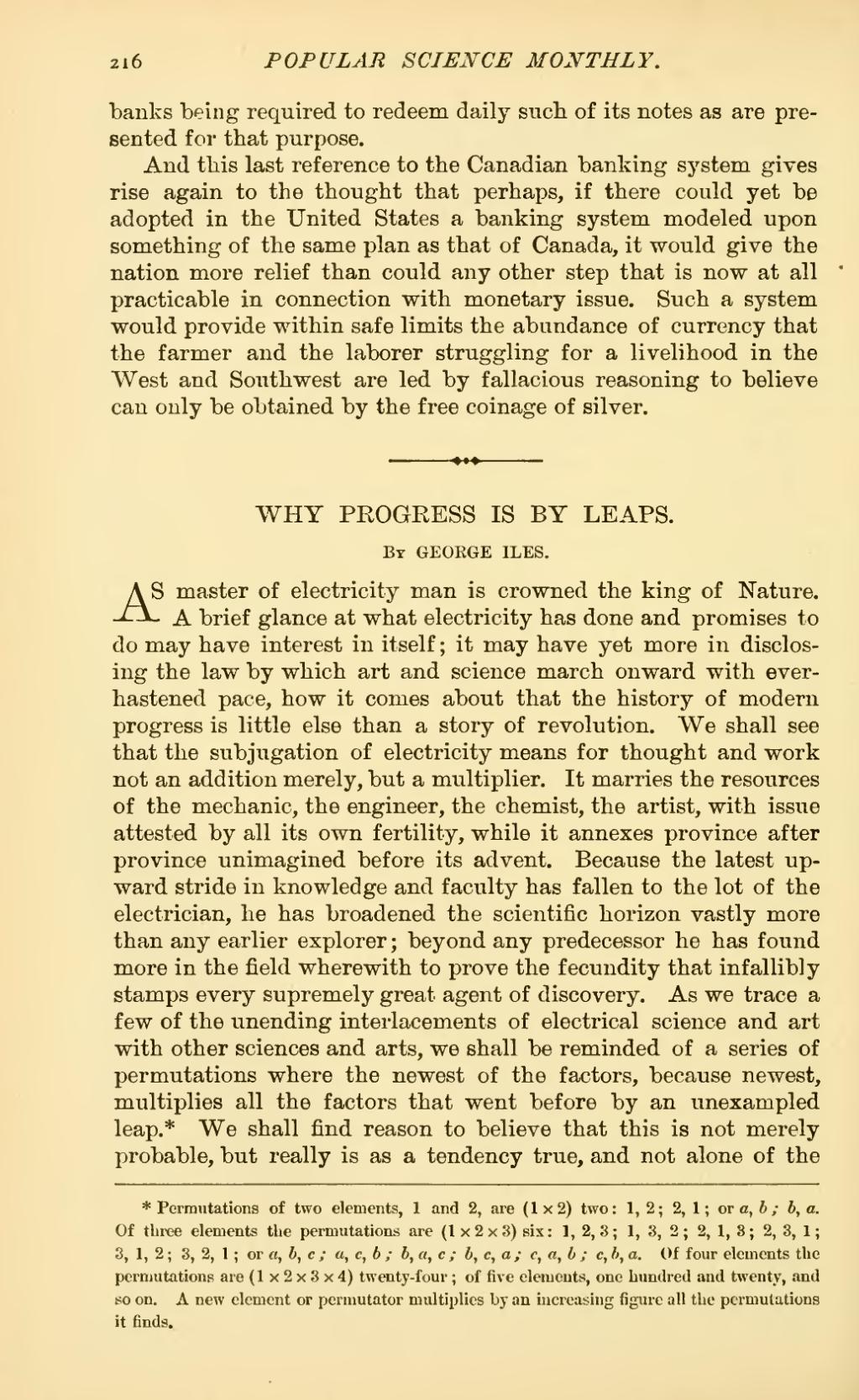banks being required to redeem daily such of its notes as are presented for that purpose.
And this last reference to the Canadian banking system gives rise again to the thought that perhaps, if there could yet be adopted in the United States a banking system modeled upon something of the same plan as that of Canada, it would give the nation more relief than could any other step that is now at all practicable in connection with monetary issue. Such a system would provide within safe limits the abundance of currency that the farmer and the laborer struggling for a livelihood in the West and Southwest are led by fallacious reasoning to believe can only be obtained by the free coinage of silver.
| WHY PROGRESS IS BY LEAPS. |
By GEORGE ILES.
AS master of electricity man is crowned the king of Nature. A brief glance at what electricity has done and promises to do may have interest in itself; it may have yet more in disclosing the law by which art and science march onward with ever-hastened pace, how it comes about that the history of modern progress is little else than a story of revolution. We shall see that the subjugation of electricity means for thought and work not an addition merely, but a multiplier. It marries the resources of the mechanic, the engineer, the chemist, the artist, with issue attested by all its own fertility, while it annexes province after province unimagined before its advent. Because the latest upward stride in knowledge and faculty has fallen to the lot of the electrician, he has broadened the scientific horizon vastly more than any earlier explorer; beyond any predecessor he has found more in the field wherewith to prove the fecundity that infallibly stamps every supremely great agent of discovery. As we trace a few of the unending interlacements of electrical science and art with other sciences and arts, we shall be reminded of a series of permutations where the newest of the factors, because newest, multiplies all the factors that went before by an unexampled leap.[1] We shall find reason to believe that this is not merely probable, but really is as a tendency true, and not alone of the
- ↑ Permutations of two elements, 1 and 2, are (1 x 2) two: 1,2; 2, 1; or a, b; b, a. Of three elements the permutations are (1x2x3) six: 1, 2, 3; 1, 3, 2; 2, 1, 3; 2, 3, 1; 3, 1, 2; 3, 2, 1; or a, b, c; a, c, b; b, a, c; b, c, a; c, a, b; c, b, a. Of four elements the permutations are (1x2x3x4) twenty-four; of five elements, one hundred and twenty, and so on. A new element or permutator multiplies by an increasing figure all the permutations it finds.
